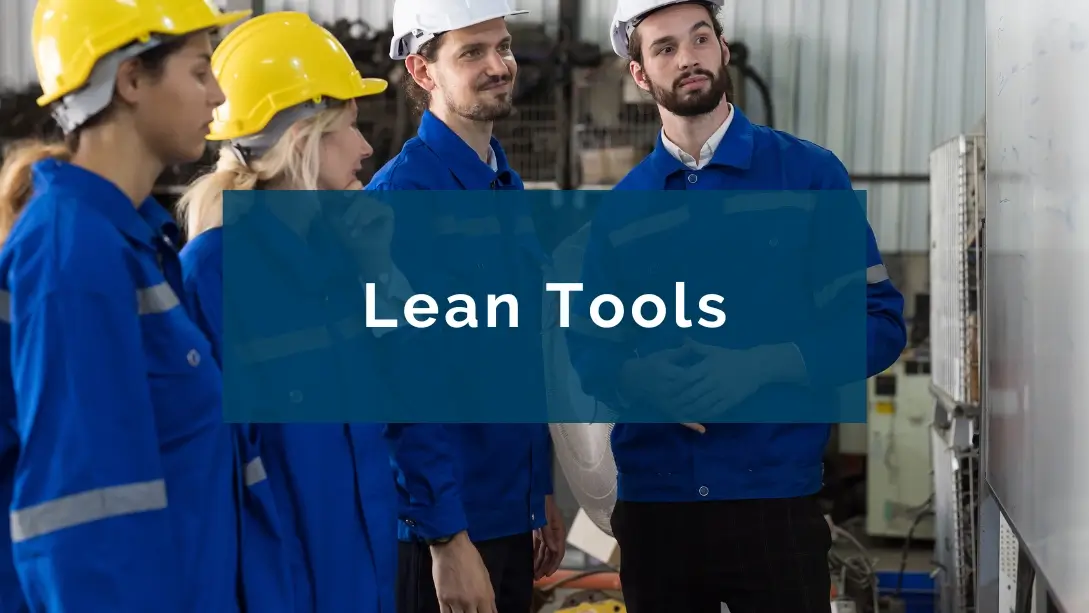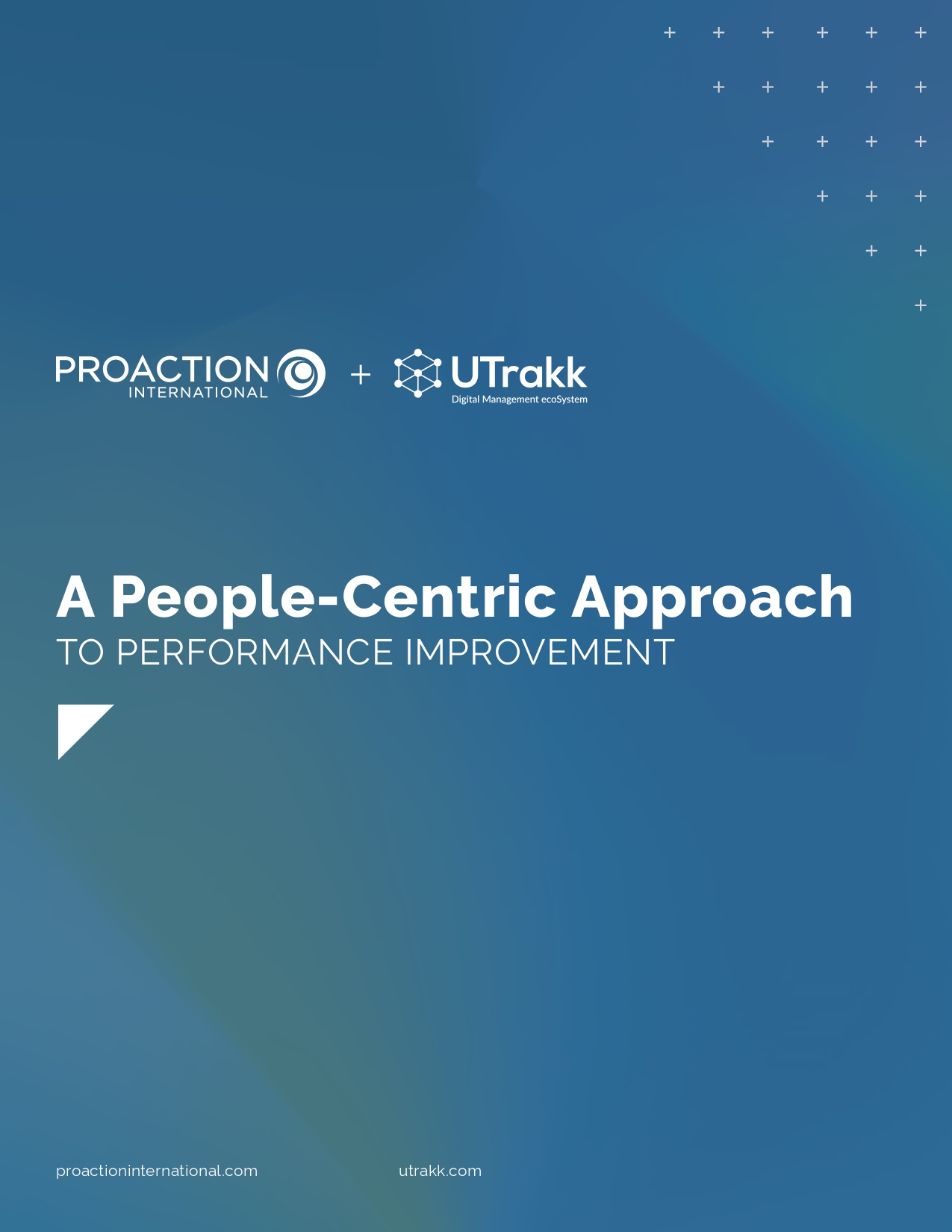
1. 5S
Organization and efficiency
5S is a Japanese organizational method that improves workplace efficiency, safety, and cleanliness. It comprises five steps:
- Seiri (Sort): Eliminate unnecessary items from the workspace.
- Seiton (Set in order): Organize tools and materials.
- Seiso (Shine): Maintain cleanliness.
- Seiketsu (Standardize): Set standards for previous processes.
- Shitsuke (Support): Ensure discipline to maintain standards.
Benefits: Improved productivity, fewer accidents, lower costs, a more pleasant working environment, and better employee commitment.
2. Six Sigma
Defect reduction
Six Sigma is a continuous improvement method that reduces manufacturing process variation and defects. It generally follows the DMAIC cycle:
- Define: Identify the problem to be solved
- Measure: Collect data to quantify the problem.
- Analyze: Examine the data to identify the causes of the problem.
- Improve: Implement solutions to resolve the problem.
- Control: Monitor the sustainability of improvements.
Benefits: Improved product quality, reduced defect costs, higher productivity, and greater customer satisfaction.
3. Kaizen
Continuous improvement
Kaizen (Japanese word for “continuous improvement”) encourages simple, consistent actions. It involves everyone, from management to operators. Here are the seven main Lean manufacturing principles of Kaizen:
- Improve continuously
- Empower employees
- Think long term
- Act immediately
- Reduce waste
- Standardize manufacturing processes
- Go to Gemba
Benefits: Greater team commitment, early detection of problems, greater adaptability, continuous process improvement, higher productivity, improved production quality.
4. PDCA (Plan-Do-Check-Act)
Iterative problem-solving
PDCA is a continuous improvement cycle for implementing improvements and streamlining manufacturing processes within a company. It is divided into four stages:
- Plan: Identify an opportunity and plan the change.
- Do: Implement the change on a small scale.
- Check: Analyze the results of the change.
- Act: If the change is successful, implement it on a larger scale.
Benefits: Structured improvement, value for money, higher quality, improved customer satisfaction, significant employee commitment, and better problem-solving.
5. Muda, Muri, Mura (3M)
Eliminating waste
Lean Manufacturing identifies three main categories of dysfunction that are detrimental to an organization's performance and profitability. The aim is to reduce these 3Ms:
- Muda (Waste): Activities that consume resources but do not create value for the customer.
- Muri (Overload): Excessive demands placed on employees, machines, or processes.
- Mura (Variability): Inconsistencies in production processes.
Benefits: Optimization of resources, improved productivity, higher quality, lower costs, greater customer satisfaction, improved working environment.
6. Pareto principle
Prioritizing actions
The Pareto principle, or 80/20 rule, is used in Lean Manufacturing to identify and prioritize opportunities for improvement. It states that approximately 80% of the effects come from 20% of the causes.
This tool helps organizations identify their most significant problems or areas requiring rapid improvement so that they can focus their resources on solving these problems first.
Benefits: Optimize resources and time and prioritize efforts on high-impact problems.
7. Gemba Walk
Floor observation
Gemba Walk (“Gemba” means “the actual place” in Japanese) is a Lean Management practice. It involves managers visiting the workplace, often the shop floor, to observe and understand manufacturing processes to gather information, as well as to dialogue with employees, listen to them, and find opportunities for improvement.
Benefits: Better problem identification and resolution, stronger employee relations, decision-making based on actual observations, and higher production efficiency.
8. Leader Standard Work
Structuring leadership
Leader Standard Work (LSW) is a method of structuring the routines and behaviors expected of leaders to ensure effective management and support Lean. In other words, it is a standardized framework describing how tasks are to be carried out from the point of view of cost, quality, time, and safety.
TSL incorporates several key processes:
- Standardized meetings (production meetings, dedicated committees, etc.)
- Gemba Walks
- Visual management
- Audits and inspections
- Procedures and training
- Personal development
Benefits: Improved managerial consistency, better team commitment, and support for continuous improvement.
9. Daily meetings (SIM)
Communication and alignment
Daily meetings, or short interval management (SIM), are short gatherings held at the start of each day or shift. They should :
- Be frequent and brief (15 to 30 minutes)
- Focus on Lean performance indicators and production objectives
- Involve teams
- Enable problems to be identified and solutions to be found
Benefits: Improved communication between teams, better decision-making, rapid problem-solving, effective coordination, and empowerment of teams.
10. Hoshin Kanri
Strategic planning
The Hoshin Kanri method (Japanese word for “compass and direction”) is a strategic management approach that enables companies to align their long-term objectives with their day-to-day actions. It is based on rigorous planning and continuous improvement, ensuring that every level of the organization is involved in executing the strategy.
Benefits: Alignment of the entire organization on common objectives, effective progress monitoring, consistency of actions with strategic priorities, improved communication, and better team commitment.
11. Visual management
Effective visual communication
Visual management uses graphic elements to communicate real-time information about a company's manufacturing performance, processes, and objectives. These visual aids include Kanban boards, Andon, performance graphs, bulletin boards, etc.
Benefits: Clarity and accessibility of information, increased responsiveness, better engagement, improved collaboration, effective performance management, optimized problem-solving, and better decision-making.
12. Kanban
Workflow management
Kanban (“label” in Japanese) is a visual work management method used to optimize the continuous flow of production and supply. Based on a system of identification cards, it enables just-in-time replenishment. Thanks to this pull-system approach, resources are mobilized only when needed, thus improving the responsiveness and efficiency of manufacturing processes.
Benefits: Reduced inventory and wastage, improved production flow, better responsiveness to demand, increased productivity, improved collaboration, and ease of use.
13. Andon
Detecting and reporting anomalies
The Andon (“lantern” in Japanese) is a visual and/or sound system used in Lean Manufacturing to instantly signal a problem on a production line or process. It aims to alert operators and managers as soon as an anomaly is detected so that they can intervene quickly and prevent defects from spreading.
Benefits: Reduced production process downtime, better equipment effectiveness, improved product quality, empowered operators, improved communication, faster problem detection and resolution.
14. Value Stream Mapping (VSM)
Process optimization
Value Stream Mapping (VSM) is used to visualize and analyze all the flows (materials, information, processes) required to produce a product or service. It consists of detailed graphic maps of each stage, from supplier to end customer, highlighting waste, bottlenecks, and opportunities for improvement.
Benefits: Identification of waste, manufacturing process optimization, improved productivity, cost reduction, team alignment, and better decision-making.
15. QRQC
Reactivity and quality control
QRQC (Quick Response Quality Control) is a method used to deal in depth with quality problems and performance deviations. It is based on rapid detection of anomalies, immediate analysis on the floor, and structured problem resolution directly by the teams concerned.
Benefits: Increased reactivity and problem resolution, improved product quality, team involvement and accountability, prevention of recurrences, deduction of defect-related costs, and improved customer satisfaction.
16. 5 Whys
Root cause analysis
This simple yet powerful problem-solving methodology focuses on identifying and resolving the root cause of a problem rather than just treating the immediate symptoms. It involves successively asking the question “Why?” until you get to the real source of the malfunction. In general, five repetitions are sufficient, but the number can vary according to the complexity of the problem.
Benefits: Simplicity and accessibility, identification of root causes, proactive problem solving, time and efficiency savings, increased team commitment, adaptability to different contexts, and development of critical thinking skills.
17. Bottleneck analysis
Process fluidity and optimization
This method aims to optimize workflow by making it more fluid. Achieving this involves identifying the bottlenecks that limit the flow of a manufacturing process, determining the impact of those bottlenecks, and finding solutions to eliminate them.
This analysis is based on the tools mentioned here, such as value chain mapping or the 5 Whys.
Benefits: Improved efficiency and quality, optimized resource management, costs and waste reduction, better responsiveness, enhanced customer satisfaction.
18. Poka-Yoke
Error prevention
Poka-Yoke (“error-proofing” in Japanese) prevents human error by designing systems or devices that immediately prevent, detect, or correct anomalies.
The aim is to guarantee quality right from the first run by making errors impossible or easily detectable before they become defects.
Benefits: Error and defect prevention, quality improvement, time and cost savings, ease of implementation, and operator empowerment.
19. Single-Minute Exchange of Die (SMED)
Writing changeover times
SMED aims to significantly reduce the time needed to switch from one production run to another. The objective is to optimize set-ups, adjustments, and preparations to minimize interruptions and maximize production process flexibility.
This Lean method distinguishes between internal tasks (which can only be carried out when the machine is stopped) and external tasks (which can be carried out before or in parallel with the changeover).
Benefits: Fewer production process interruptions, greater flexibility and responsiveness, lower production costs, improved productivity, and better customer satisfaction.
20. Just-in-Time (JIT)
Pull production
Just-in-Time (JIT) manufacturing means producing only what is needed, exactly when it is required, and in the optimum quantity. Inspired by the Toyota Production System (TPS), this approach adapts production to actual customer demand.
It uses pull flow, reduced waiting times, and manufacturing process optimization to ensure smooth, efficient production.
Benefits: Reduced inventory and associated costs, less waste, greater flexibility, higher overall efficiency, optimized quality, and improved customer satisfaction.
21. Takt Time
Production synchronization
Takt time is a key indicator that defines the ideal production rate of a good to meet customer demand without overproduction or underproduction. It is calculated using the following formula:
Takt Time = Available production time/Customer demand
For example, if a manufacturing company has 8 hours of production available per day and needs to produce 240 parts: Takt Time = 480 minutes (i.e., 8 hours)/240 = 2 minutes per part
Benefits: Exact alignment, greater operational efficiency, reduced waste, standardization of manufacturing processes, and improved customer satisfaction.
22. Jidoka
Integrated quality and autonomy
Jidoka, or autonomation, enables machines and operators to stop production automatically when detecting an anomaly. Unlike conventional automation, where machines run continuously, Jidoka offers real-time quality control.
The concept is based on four steps:
- Detection of an anomaly
- Immediate process stop
- Problem-solving
- Implementation of a sustainable solution
Benefits: Immediate prevention of defects, reduction of costs linked to non-conformities, empowerment of operators, optimization of production flow, improved quality, and customer satisfaction.
23. Standardization of work
Stability and reproducibility
Work standardization consists of defining, documenting, and applying best practices for efficiently, reproducibly, and optimally carrying out tasks. It is based on establishing clear standards concerning sequences of operations, cycle times, tools used, and quality criteria. These standards are benchmarks to ensure process stability while enabling continuous improvement.
Benefits: Reduced variability, improved quality, optimized efficiency, easier training of new employees, basis for continuous improvement.
24. Heijunka
Production smoothing
Heijunka (“leveling” in Japanese) aims to evenly distribute the workload to avoid both peaks and troughs in production. Rather than producing large batches according to immediate demand, Heijunka stabilizes production flow by distributing volumes evenly over a given period.
Benefits: Fewer bottlenecks, less inventory and waste, greater flexibility in fluctuating demand, improved quality, optimized delivery times, and improved working conditions.
25. Continuous flow
No more interruptions
Continuous flow ensures a smooth, uninterrupted sequence of operations in the manufacturing process, eliminating waiting times and interruptions. Each unit is produced and immediately passed onto the next stage without interruption.
This concept is often associated with Just-in-Time and Takt Time, which enable production rates to be adapted to actual demand.
Benefits: Reduced production lead times, lower intermediate stocks, improved quality, improved production flow, optimized use of resources, and better responsiveness to market needs.
Choosing the right Lean tools to ensure continuous improvement
There is no single recipe for Lean: the right tool is the one that meets your company's specific needs and fits naturally into your manufacturing processes. A common mistake is to apply all Lean tools indiscriminately, hoping for automatic improvement. To maximize impact, however, you must adopt a well-thought-out, targeted approach.
Here are a few questions to ask yourself to determine which solutions are best suited to your business:
- What are the challenges and opportunities? Before implementing a Lean tool, diagnose your current situation precisely.
- What are your improvement objectives? Each Lean tool addresses a specific purpose.
Once you've chosen your tools, you need to integrate them gradually. Start with simple tools with almost immediate results (5S, PDCA, Gemba Walk), then move on to more advanced approaches (Hoshin Kanri, Jidoka). Then, test and adjust according to the results obtained.
Pro tip: Fully integrate Lean Manufacturing tools into your corporate culture. A tool can only work if teams adopt it and use it on a daily basis. Involving employees, training leaders, and implementing visual management are essential strategies for ensuring sustainability of good practices.
Digitalize your Lean Manufacturing tools with UTrakk to boost operational efficiency
UTrakk Daily Management System (DMS) offers a complete range of features designed to digitalize Lean tools. By integrating them into the organization’s daily management and processes, this powerful solution consolidates and optimizes Lean Manufacturing practices to increase efficiency and sustainability.
Digitalized of floor tours
UTrakk facilitates the planning and execution of structured floor tours, enabling managers to regularly oversee and monitor activities on the floor, document observations in real-time, and follow up on corrective actions directly from the application.
Meeting and collaboration ritual management
The DMS solution simplifies the management of meetings and other collaboration rituals, offering tools for planning agendas, managing continuous improvement actions and projects, and monitoring key performance indicators. This structured approach ensures alignment with operational goals associated with the implementation of Lean Manufacturing principles.
Action plan development and tracking
UTrakk lets you develop, assign, and track action plans for proactive management of Lean initiatives. These action plans can be associated with a ritual to ensure close monitoring, quick decision-making, and timely completion of improvement actions.
Digital Knowledge Center
With its Knowledge Center, the UTrakk solution digitalizes standard operating procedures (SOPs), work instructions, and organizational processes. Centralized in this digital repository, information can be accessed and shared quickly and easily, strengthening compliance and the application of Lean practices across the company.
Lean Manufacturing tools and digitalization: A powerful duo for sustainable performance
Lean is more than a toolbox: it's a continuous improvement approach that profoundly transforms corporate culture, team engagement, and the quest for excellence.
Each method, whether 5S, Kanban, Gemba Walk, or others, produces optimum results only if applied consistently and adapted to the company's challenges. It's not the quantity of tools that makes the difference, but their intelligent integration and team appropriation.
In this context, digitalization dramatically accelerates performance. With solutions like UTrakk, every initiative can be better monitored, optimized, and sustained to amplify the impact of Lean.
Combining Lean, digitalization, and commitment means boosting your company's competitiveness and giving it the means to achieve long-term efficiency and operational excellence.










